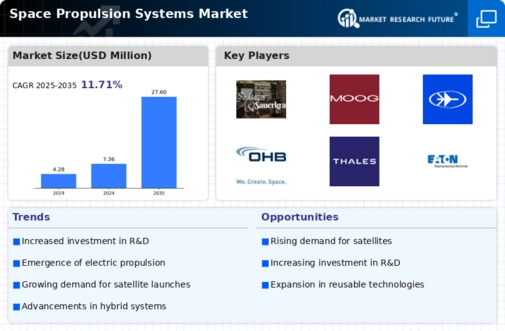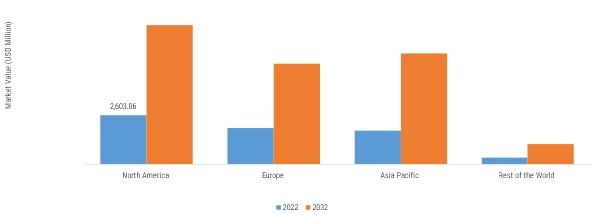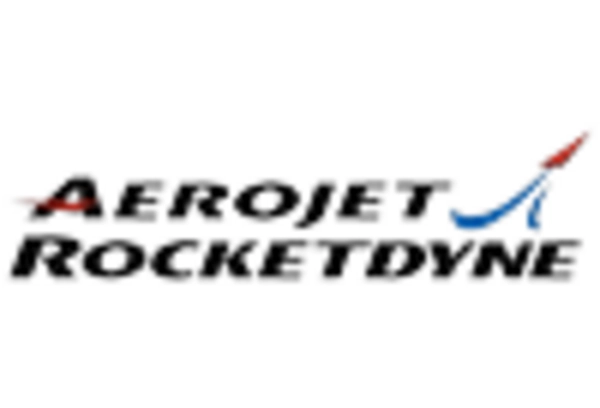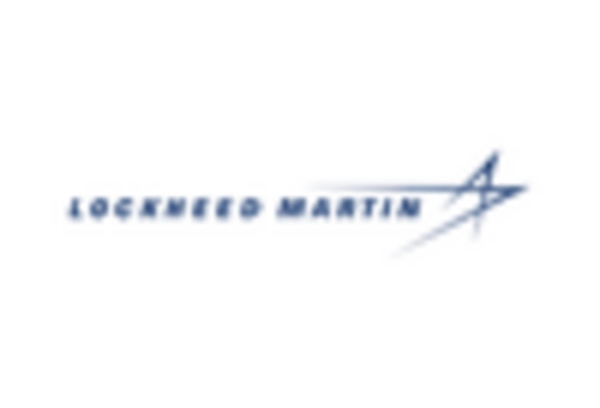-
EXECUTIVE SUMMARY 20
-
MARKET INTRODUCTION 23
-
DEFINITION 23
-
SCOPE OF THE STUDY 23
-
RESEARCH OBJECTIVE 23
-
MARKET STRUCTURE 24
-
RESEARCH METHODOLOGY 25
-
OVERVIEW 25
-
DATA FLOW 27
- Data Mining Process 27
-
PURCHASED DATABASE: 28
-
SECONDARY SOURCES: 29
- Secondary Research data flow: 30
-
PRIMARY RESEARCH: 31
- Primary Research DATA FLOW: 32
- Primary Research: Number of Interviews conducted 33
-
APPROACHES FOR MARKET SIZE ESTIMATION: 33
- Revenue Analysis Approach 33
-
DATA FORECASTING 34
- Data forecasting Type 34
-
DATA MODELING 35
- microeconomic factor analysis: 35
- Data modeling: 36
-
MARKET DYNAMICS 39
-
INTRODUCTION 39
-
DRIVERS 40
- Growing demand for satellite constellations for communication services 40
- Government investments in space exploration and defense initiatives 40
-
RESTRAINTS 42
- High initial investment and development costs 42
- Regulatory hurdles and international agreements 42
-
OPPORTUNITY 44
- Emergence of electric propulsion technologies 44
- Expansion of commercial space industry 45
-
CHALLENGES 45
- Environmental concerns regarding propulsion technologies 45
-
MARKET & TECHNOLOGY TRENDS 46
- Integration of additive manufacturing in propulsion system production 46
- Rising focus on sustainable and green propulsion technologies 46
- Integration of AI for autonomous navigation and optimization 47
-
IMPACT ANALYSIS OF COVID-19 48
-
REGULATORY OUTLOOK 48
-
FUTURE TECHNOLOGICAL ADVANCEMENTS 50
-
SPACE PROPULSION SYSTEMS PRESENT, CONSTRAINTS & NEEDS & FUTURE TRENDS 51
-
LANDER / INTERPLANETARY SPECIFIC ANALYSIS – APPLICABLE PROPULSION;
-
PRESENT, CONSTRAINTS & NEEDS & FUTURE TRENDS 51
-
LAUNCHER & SPACE TAG SPECIFIC ANALYSIS – APPLICABLE PROPULSION; PRESENT, CONSTRAINTS & NEEDS & FUTURE TRENDS 52
-
MARKET FACTOR ANALYSIS 53
-
VALUE CHAIN ANALYSIS 53
- Component Sourcing and Manufacturing 54
- Integration and Testing 54
- Launch and Operation 55
- Innovation and Regulation 55
-
PORTER’S FIVE FORCES MODEL 56
- Threat of New Entrants 56
- Bargaining Power of Suppliers 57
- Threat of Substitutes 57
- Bargaining Power of Buyers 58
- Intensity of Rivalry 58
-
SWOT ANALYSIS 58
- Strength 58
- Weakness 59
- Opportunity 60
- Threat 60
-
PESTEL ANALYSIS 61
- Political Factors 61
- Economic Factors 61
- Social Factors 62
- Technological Factors 62
- Environmental Factors 63
- Legal Factors 63
-
GLOBAL SPACE PROPULSION SYSTEMS MARKET, BY TYPE 65
-
OVERVIEW 65
-
GLOBAL SPACE PROPULSION SYSTEMS MARKET, BY APPLICATION 68
-
OVERVIEW 68
-
GLOBAL SPACE PROPULSION SYSTEMS MARKET, BY ORBIT TYPE 71
-
OVERVIEW 71
-
GLOBAL SPACE PROPULSION SYSTEMS MARKET, BY END-USERS 74
-
OVERVIEW 74
-
GLOBAL SPACE PROPULSION SYSTEMS MARKET, BY REGION 76
-
GLOBAL 76
-
NORTH AMERICA 77
- US 81
- Canada 83
- mexico 85
-
EUROPE 87
- UK 91
- Germany 93
- France 95
- Italy 97
- Spain 99
- Russia 101
- Rest of Europe 103
-
ASIA PACIFIC 105
- China 109
- Japan 111
- India 113
- South korea 115
- Australia 117
- Rest of Asia Pacific 119
-
REST OF THE WORLD 121
- Middle East & Africa 125
- South America 127
-
COMPETITIVE LANDSCAPE 129
-
COMPETITIVE OVERVIEW 129
-
MAJOR PLAYERS IN THE GLOBAL SPACE PROPULSION SYSTEMS MARKET 129
-
COMPETITIVE BENCHMARKING 130
-
LEADING PLAYERS IN TERMS OF THE NUMBER OF DEVELOPMENTS IN THE GLOBAL GEOSPATIAL MARKET 131
-
KEY DEVELOPMENTS & GROWTH STRATEGIES 132
- Contracts and agreements 132
- Product Launch/Product Development 133
- Collaboration/Partnership 133
-
COMPANY PROFILES 134
-
SAFRAN SA 134
- Company Overview 134
- Financial Overview 135
- Products/Services Offered 135
- Key Developments 136
- SWOT Analysis 136
- Key Strategies 136
-
IHI CORPORATION 137
- COMPANY OVERVIEW 137
- FINANCIAL OVERVIEW 137
- PRODUCTS OFFERED 137
- Key Developments 137
- SWOT ANALYSIS 138
- KEY STRATEGIES 138
-
SPACE EXPLORATION TECHNOLOGIES CORP 139
- COMPANY OVERVIEW 139
- FINANCIAL OVERVIEW 139
- PRODUCTS OFFERED 139
- KEY DEVELOPMENTS 139
- SWOT ANALYSIS 140
- KEY STRATEGIES 140
-
NORTHROP GRUMMAN CORPORATION 141
- COMPANY OVERVIEW 141
- Financial Overview 142
- PRODUCTS OFFERED 142
- KEY DEVELOPMENTS 143
- SWOT ANALYSIS 143
- KEY STRATEGIES 144
-
L3HARRIS TECHNOLOGIES, INC. 145
- COMPANY OVERVIEW 145
- Financial Overview 145
- PRODUCTS OFFERED 145
- KEY DEVELOPMENTS 146
- SWOT ANALYSIS 146
- KEY STRATEGIES 147
-
MOOG, INC. 148
- Company Overview 148
- Financial Overview 148
- Products/Services Offered 149
- KEY DEVELOPMENTS 149
- SWOT Analysis 149
- Key Strategies 150
-
RAFAEL ADVANCED DEFENSE SYSTEMS LTD. 151
- COMPANY OVERVIEW 151
- FINANCIAL OVERVIEW 151
- PRODUCTS OFFERED 151
- KEY DEVELOPMENTS 151
- SWOT ANALYSIS 152
- KEY STRATEGIES 152
-
OHB SE 153
- COMPANY OVERVIEW 153
- FINANCIAL OVERVIEW 153
- PRODUCTS OFFERED 153
- KEY DEVELOPMENTS 153
- SWOT ANALYSIS 154
- KEY STRATEGIES 154
-
LOCKHEED MARTIN CORPORATION 155
- Company Overview 155
- Financial Overview 156
- Products/Services Offered 156
- Key Developments 157
- SWOT Analysis 157
- Key Strategies 157
-
NPO ENERGOMASH 158
- COMPANY OVERVIEW 158
- FINANCIAL OVERVIEW 158
- PRODUCTS OFFERED 158
- KEY DEVELOPMENTS 158
- SWOT ANALYSIS 159
- KEY STRATEGIES 159
-
SIERRA NEVADA CORPORATION 160
- COMPANY OVERVIEW 160
- FINANCIAL OVERVIEW 160
- PRODUCTS OFFERED 160
- KEY DEVELOPMENTS 160
- SWOT ANALYSIS 161
- KEY STRATEGIES 161
-
THALES GROUP 162
- COMPANY OVERVIEW 162
- Financial Overview 162
- PRODUCTS OFFERED 163
- KEY DEVELOPMENTS 163
- SWOT ANALYSIS 164
- KEY STRATEGIES 164
-
EATON 165
- COMPANY OVERVIEW 165
- Financial Overview 165
- PRODUCTS OFFERED 166
- KEY DEVELOPMENTS 166
- SWOT ANALYSIS 166
- KEY STRATEGIES 167
-
VACCO INDUSTRIES 168
- COMPANY OVERVIEW 168
- FINANCIAL OVERVIEW 168
- PRODUCTS OFFERED 168
- KEY DEVELOPMENTS 168
- SWOT ANALYSIS 169
- KEY STRATEGIES 169
-
ARIANEGROUP 170
- Company Overview 170
- FINANCIAL OVERVIEW 170
- Products/Services Offered 170
- KEY DEVELOPMENTS 170
- SWOT Analysis 171
- Key Strategies 171
-
AIRBUS SE 172
- COMPANY OVERVIEW 172
- Financial Overview 172
- PRODUCTS OFFERED 173
- KEY DEVELOPMENTS 173
- SWOT ANALYSIS 174
- KEY STRATEGIES 174
-
APPENDIX 175
-
REFERENCES 175
-
DATA CITATIONS 177
-
-
LIST OF TABLES
-
QFD MODELING FOR MARKET SHARE ASSESSMENT 36
-
GLOBAL SPACE PROPULSION SYSTEMS MARKET, BY TYPE, 2019–2032 (USD MILLION) 67
-
GLOBAL SPACE PROPULSION SYSTEMS MARKET, BY APPLICATION, 2019–2032 (USD MILLION) 69
-
GLOBAL SPACE PROPULSION SYSTEMS MARKET, BY ORBIT TYPE, 2019–2032 (USD MILLION) 72
-
GLOBAL SPACE PROPULSION SYSTEMS MARKET, BY END-USERS, 2019–2032 (USD MILLION) 75
-
GLOBAL SPACE PROPULSION SYSTEMS MARKET, BY REGION, 2019–2032 (USD MILLION) 77
-
NORTH AMERICA: SPACE PROPULSION SYSTEMS MARKET, BY COUNTRY, 2019–2032 (USD MILLION) 79
-
NORTH AMERICA SPACE PROPULSION SYSTEMS MARKET, BY TYPE, 2019–2032 (USD MILLION) 79
-
NORTH AMERICA SPACE PROPULSION SYSTEMS MARKET, BY APPLICATION, 2019–2032 (USD MILLION) 80
-
NORTH AMERICA SPACE PROPULSION SYSTEMS MARKET, BY ORBIT TYPE, 2019–2032 (USD MILLION) 80
-
NORTH AMERICA SPACE PROPULSION SYSTEMS MARKET, BY END-USERS, 2019–2032 (USD MILLION) 80
-
US SPACE PROPULSION SYSTEMS MARKET, BY TYPE, 2019–2032 (USD MILLION) 81
-
US SPACE PROPULSION SYSTEMS MARKET, BY APPLICATION, 2019–2032 (USD MILLION) 81
-
US SPACE PROPULSION SYSTEMS MARKET, BY ORBIT TYPE, 2019–2032 (USD MILLION) 82
-
US SPACE PROPULSION SYSTEMS MARKET, BY END-USERS, 2019–2032 (USD MILLION) 82
-
CANADA SPACE PROPULSION SYSTEMS MARKET, BY TYPE, 2019–2032 (USD MILLION) 83
-
CANADA SPACE PROPULSION SYSTEMS MARKET, BY APPLICATION, 2019–2032 (USD MILLION) 83
-
CANADA SPACE PROPULSION SYSTEMS MARKET, BY ORBIT TYPE, 2019–2032 (USD MILLION) 84
-
CANADA SPACE PROPULSION SYSTEMS MARKET, BY END-USERS, 2019–2032 (USD MILLION) 84
-
MEXICO SPACE PROPULSION SYSTEMS MARKET, BY TYPE, 2019–2032 (USD MILLION) 85
-
MEXICO SPACE PROPULSION SYSTEMS MARKET, BY APPLICATION, 2019–2032 (USD MILLION) 85
-
MEXICO SPACE PROPULSION SYSTEMS MARKET, BY ORBIT TYPE, 2019–2032 (USD MILLION) 86
-
MEXICO SPACE PROPULSION SYSTEMS MARKET, BY END-USERS, 2019–2032 (USD MILLION) 86
-
EUROPE: SPACE PROPULSION SYSTEMS MARKET, BY COUNTRY, 2019–2032 (USD MILLION) 89
-
EUROPE SPACE PROPULSION SYSTEMS MARKET, BY TYPE, 2019–2032 (USD MILLION) 89
-
EUROPE SPACE PROPULSION SYSTEMS MARKET, BY APPLICATION, 2019–2032 (USD MILLION) 90
-
EUROPE SPACE PROPULSION SYSTEMS MARKET, BY ORBIT TYPE, 2019–2032 (USD MILLION) 90
-
EUROPE SPACE PROPULSION SYSTEMS MARKET, BY END-USERS, 2019–2032 (USD MILLION) 90
-
UK SPACE PROPULSION SYSTEMS MARKET, BY TYPE, 2019–2032 (USD MILLION) 91
-
UK SPACE PROPULSION SYSTEMS MARKET, BY APPLICATION, 2019–2032 (USD MILLION) 91
-
UK SPACE PROPULSION SYSTEMS MARKET, BY ORBIT TYPE, 2019–2032 (USD MILLION) 92
-
UK SPACE PROPULSION SYSTEMS MARKET, BY END-USERS, 2019–2032 (USD MILLION) 92
-
GERMANY SPACE PROPULSION SYSTEMS MARKET, BY TYPE, 2019–2032 (USD MILLION) 93
-
GERMANY SPACE PROPULSION SYSTEMS MARKET, BY APPLICATION, 2019–2032 (USD MILLION) 93
-
GERMANY SPACE PROPULSION SYSTEMS MARKET, BY ORBIT TYPE, 2019–2032 (USD MILLION) 94
-
GERMANY SPACE PROPULSION SYSTEMS MARKET, BY END-USERS, 2019–2032 (USD MILLION) 94
-
FRANCE SPACE PROPULSION SYSTEMS MARKET, BY TYPE, 2019–2032 (USD MILLION) 95
-
FRANCE SPACE PROPULSION SYSTEMS MARKET, BY APPLICATION, 2019–2032 (USD MILLION) 95
-
FRANCE SPACE PROPULSION SYSTEMS MARKET, BY ORBIT TYPE, 2019–2032 (USD MILLION) 96
-
FRANCE SPACE PROPULSION SYSTEMS MARKET, BY END-USERS, 2019–2032 (USD MILLION) 96
-
ITALY SPACE PROPULSION SYSTEMS MARKET, BY TYPE, 2019–2032 (USD MILLION) 97
-
ITALY SPACE PROPULSION SYSTEMS MARKET, BY APPLICATION, 2019–2032 (USD MILLION) 97
-
ITALY SPACE PROPULSION SYSTEMS MARKET, BY ORBIT TYPE, 2019–2032 (USD MILLION) 98
-
ITALY SPACE PROPULSION SYSTEMS MARKET, BY END-USERS, 2019–2032 (USD MILLION) 98
-
SPAIN SPACE PROPULSION SYSTEMS MARKET, BY TYPE, 2019–2032 (USD MILLION) 99
-
SPAIN SPACE PROPULSION SYSTEMS MARKET, BY APPLICATION, 2019–2032 (USD MILLION) 99
-
SPAIN SPACE PROPULSION SYSTEMS MARKET, BY ORBIT TYPE, 2019–2032 (USD MILLION) 100
-
SPAIN SPACE PROPULSION SYSTEMS MARKET, BY END-USERS, 2019–2032 (USD MILLION) 100
-
RUSSIA SPACE PROPULSION SYSTEMS MARKET, BY TYPE, 2019–2032 (USD MILLION) 101
-
RUSSIA SPACE PROPULSION SYSTEMS MARKET, BY APPLICATION, 2019–2032 (USD MILLION) 101
-
RUSSIA SPACE PROPULSION SYSTEMS MARKET, BY ORBIT TYPE, 2019–2032 (USD MILLION) 102
-
RUSSIA SPACE PROPULSION SYSTEMS MARKET, BY END-USERS, 2019–2032 (USD MILLION) 102
-
REST OF EUROPE SPACE PROPULSION SYSTEMS MARKET, BY TYPE, 2019–2032 (USD MILLION) 103
-
REST OF EUROPE SPACE PROPULSION SYSTEMS MARKET, BY APPLICATION, 2019–2032 (USD MILLION) 103
-
REST OF EUROPE SPACE PROPULSION SYSTEMS MARKET, BY ORBIT TYPE, 2019–2032 (USD MILLION) 104
-
REST OF EUROPE SPACE PROPULSION SYSTEMS MARKET, BY END-USERS, 2019–2032 (USD MILLION) 104
-
ASIA PACIFIC: SPACE PROPULSION SYSTEMS MARKET, BY COUNTRY, 2019–2032 (USD MILLION) 107
-
ASIA PACIFIC SPACE PROPULSION SYSTEMS MARKET, BY TYPE, 2019–2032 (USD MILLION) 107
-
ASIA PACIFIC SPACE PROPULSION SYSTEMS MARKET, BY A'










Leave a Comment